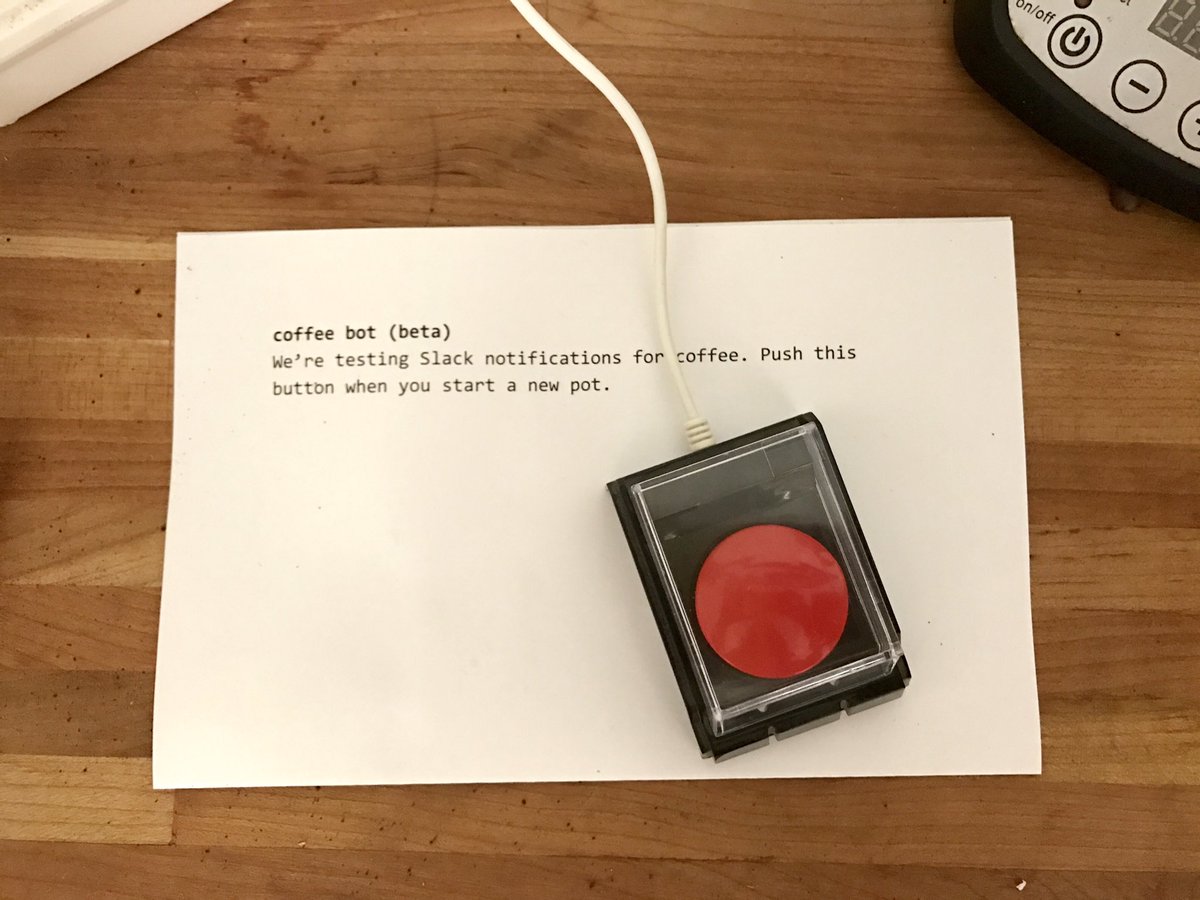
Of the many small, annoying things about working in an office, coffee is usually somewhere on the list. Whose turn is it to make it? Who is drinking more than their share of the communal pot? Is that half-full carafe still warm?
So some folks at the Los Angeles Times built a Slack bot for it.
our @datadesk coffee bot is coming along pic.twitter.com/CrTqCfUeEv
— ☕ (@joemfox) April 11, 2017
“Computers are great at mitigating tiny frustrations, like when you walk across the newsroom to the coffee pot and there is none left,” Joe Fox, a graphics and data journalist at the Times whose Twitter header includes a coffee emoji (☕). “We had been talking about some kind of automated coffee system for a while.” They threw around a few ideas: An infrared temperature sensor that would be aimed at the pot so it could theoretically tell you whether there was coffee left. An electronic scale that would sit under the coffee maker to measure the weight of the remaining coffee. A series of infrared laser sensors that would be fired through the pot to tell you how much coffee was left in it. (“We’d have to get a glass pot instead of our stainless steel one,” Fox said.)
Chris Keller, the Times’ newly hired deputy director of data visualization, came up with a simpler idea: A Raspberry Pi (a tiny basic computer) and a simple USB-connected button. “You push the button when you start brewing a pot, and it sends a message to our Slack channel that says brewing has started,” Fox said. “Eight minutes later, it notifies us that the coffee is ready to drink. It’s also logging the time of each pot so that it can report when the last pot was brewed, and in the future start generating some stats.” It’s the L.A. Times’ first Slack bot that’s hooked up to a physical thing in the newsroom. It competes with another “fun” bot, Copyboy, that can post lunch spots and GIFs.
when you're the older brother slackbot who DID NOT SIGN UP for your parents to have a new baby pic.twitter.com/KRaQr6272m
— Kyle Kim (@kyleykim) April 12, 2017
The bot worked well for a day and has been crashing since. Fox said when he’s fixed the bugs, he’ll put it on GitHub, where it’ll join such cutting-edge projects as a Twitter bot that tweets imaginary burrito-related patents.
There’s still the problem of whose turn it is to make the coffee. “There is a group of heavy coffee drinkers here,” Fox said. “We tend to take turns making it.” But anyone who’s worked in an office knows that some people never make, they only take. “That’s something I’d like to start tracking with the coffee bot, if I can figure out a good way to do it,” Fox said.